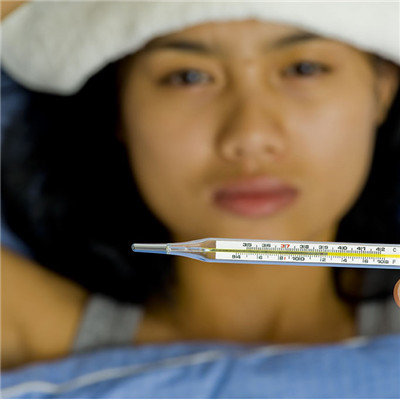What reason is infantile rash caused?
summary
Infantile rash is a common acute febrile and eruptive disease in infants, which is caused by human herpesvirus 6 and 7 infection. It is characterized by a sudden drop in fever 3-5 days later, rose red macular papules appear on the skin, and the condition is relieved. If there are no complications, it can be cured quickly. Let's take a look at the following.
What reason is infantile rash caused?
First, human herpesvirus type 6 (HHV-6) is the main cause of ES, most of ES is caused by HHV-6B infection, rarely by a infection. In children with acute rash and febrile diseases, type B infection is more common. In immunosuppressed patients, both types of infection can be seen. Other rare causes are human herpesvirus 7 (HHV-7), coxsackievirus A and B, echovirus, adenovirus and parainfluenza virus 1.
Second, HHV-6 has the typical morphological characteristics of herpesvirus family. The virus particles are round and consist of 162 capsids with a 20 faceted symmetrical nucleocapsid, 90-110 nm in diameter; The outer cortex is composed of cortical granules with a thickness of 20-40 nm; The outer surface is covered with a layer of lipid membrane, and there are irregular glycoprotein protrusions on the surface. The core is a linear double stranded DNA winding around a core protein to form an axoneme; The diameter of mature virus particles was 180-200 nm.
Third: HHV was first isolated from peripheral blood T lymphocytes of healthy adults in 1990, and then from patients with chronic fatigue syndrome. The diameter of virus particles is about 200 nm. HHV-7 has a capsule. It is the same as HHV-6 and CMV β- Herpesviridae.
matters needing attention
After 3-5 days of fever, the fever suddenly drops, and the body temperature drops to normal within 24 hours. At the same time or later the fever subsides, the rash appears. The rash is red macular papules, scattered, ranging in diameter from 2 to 5 mm, fading and rarely fusing. The rash usually occurs first in the face, neck and trunk, and then gradually spread to the proximal extremities. After 1-2 days, the rash subsided without any trace, desquamation and pigmentation. In some cases, erythema may appear on the palate at the early stage, and the rash can subside without special treatment.













